September 20, 2013
Moguro Fukuzou
Kim Bok-dong
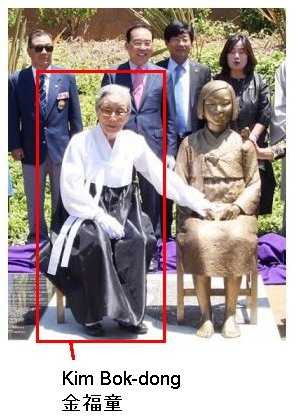
Due to her public appearance in many places, former comfort woman Kim Bok-dong is becoming increasingly famous. As of September 2013, this old lady is playing a role of the top actress at the forefront of the anti-Japan smear campaign.
Her claims are:
- She was told she was going to a military uniform factory, but ended up at a Japanese military-run brothel in Southern China.
- As she is a living evidence of Japanfs atrocity during the war, Japan must admit that the Imperial Japanese Army coerced 200,000 women and girls into sexual slavery, issue formal apology, and pay compensation.

There are two articles one contained in the "Nanum Sharing House History Handbook" and the other in the "Memory for the Future II
that describe the life of Kim Bok-dong as you find as follows. (Translation is by the author.)
[Note] For words marked in yellow, see below.
Halmoni Kim Bok-dong was born May 1, 1926 in Yanzan, Gyengsangnam-do Province, as the forth child of six sisters. One day in 1941, when she was 15 years-old, the ward headman in the village and a Japanese man wearing yellow cloth came to her home and said, gIf you do not have any son, you must deliver one of your daughters to
Teishitai.h
When Mother asked what was Teishintai, they replied gIt is to work at a military supply factory. The daughter will be engaged in the production of army uniforms. After three years of work, she can come back home.h Under much pressure, Mother was forced to place the seal on the documents.
By bus, she was taken to Pusan. In Pusan, she was locked up in a warehouse with approximately 20 other girls collected from other provinces.
The Japanese man who visited her home and a Korean interpreter who said he had lived in Japan for a long time led the group of girls to Taiwan via Shimono-seki. In Taiwan, they were ordered to change their cloths to Monpe and wrote letters to their parents with details as told by these men. Girls were again ordered to board a cargo ship and arrived at Canton, China. There, in a hospital they were taken to, medical inspection of venereal diseases was forced upon them and the girls were brought to a nearby building. The building was a Comfort Station the girls were to experience nightmare in the coming days.
There was a corridor in the middle of the building and it was sandwiched by two rows of rooms facing each other.
Each room had its own number and the name of the comfort woman. Those rooms were provided to the girls.
There was no furniture inside except one wooden bed. As the walls were made from only thin plywood sheets you could hear the murmur of people in other rooms. The girls were unable to go outside as the Japanese man and the Korean man, who brought them there, were on the watch.
The army surgeon came in the afternoon hours of the day. Scared, she tried to run away but the army surgeon captured her and beat her severely. As she was so scared she could not do anything. Unable to resist, she finally left herself to the misfortune.
She shivered as it was her first time. She endured great pain as her vagina swelled and it was bleeding from the injured area. After it was over, she could not even take a pee. She decided to commit suicide and drank a lot of Baigar liquor. They discovered the scene however, and made her go through gastric lavage. She was unable to die and unable to eat food well for about three months because of the rough gastric lavage procedure and suffers stomach pain even today.
The girls had to have sex with about 15 men per day and 50 men at weekends. She was given a Japanese name and called Kanemura Fuyuko, or at times, Yoshiko. Inspection of venereal diseases was conducted periodically, almost once a week.
Sometime later, she was taken to Hong Kong and then to Singapore. The place was very hot and she could hear the sound of artillery guns echoed through the air at all times.
She and the rest of girls were then taken to Sumatra, Indonesia, Malaysia and Java. They moved along with the Japanese Army. At rest time, if any such time was available for the girls, they got together and wept.
Suddenly, the soldiers stopped to come and a Japanese soldier on a red-cross car came to take them to the No.10 Army Hospital in Singapore. There, the girls knew Japan was defeated. She was trained to become a nurse and worked for the hospital. One day, a man who married her cousin visited her. He arranged the return trip to Pusan for the girls.
Five years had passed when the ship arrived at Pusan. Her physical condition was so poor it took one year to recover from the ill-health.
When she recovered, Mother begged her to marry a man. When she confessed she worked not as a nurse but as a comfort woman, Mother cried bitterly and since then began to suffer heart failure. To realize Motherfs wish, she married but her marriage life didnft go well and the couple divorced. She re-married and, after the death of her second husband, she continues to live alone.
When she heard that the opening of the Imperial Japanese Army Comfort Women Museum was delayed because of shortage of the fund, she thankfully provided 1,000 won (approximately One Million Yen) to the Museum fund. Furthermore, at the opening ceremony of the museum, she gave the following message:
gMany halmonis passed away without being released from their Han (rancor). I ask you young people, our students and children. You ought to know about our sufferings, the sacrifice of our lives, in order to release us from Han. Please learn what had happened so that you never suffer like us. You deserve your good life.h
|
[Terminology and Map]
| Monpe |
Teishintai |
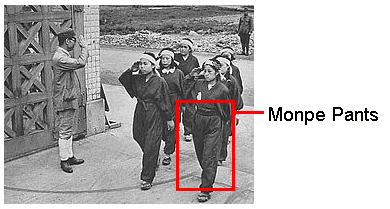 |
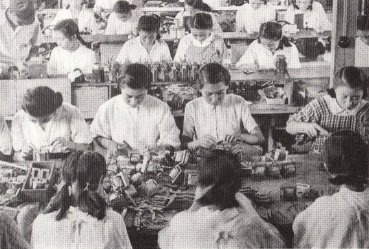 |
| Japan's Occupation during WWII(click to enlarge) |
Rosie the Riveter |
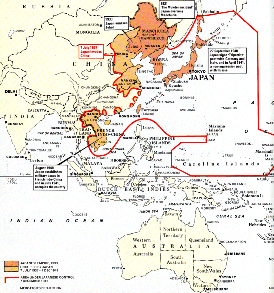 |
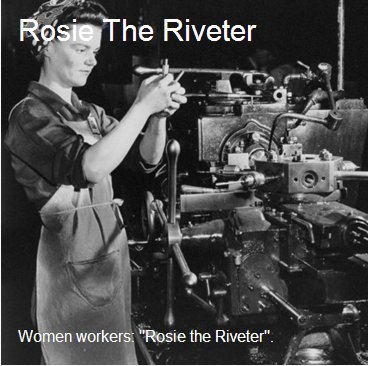 |

[Author's Opinion/Analysis]
Before I say anything about my opinion, I ask the readers to stay focused on the real comfort women issue - the issue whether or not the girls were enforced (kidnapped/abducted) into the comfort women business by the Japanese Government Authority and/or Imperial Japanese Army. Nobody denies the fact that comfort women and comfort stations existed. The major focus is whether the girls had become comfort women willingly or unwillingly by external force, especially by administrative authority or by use of force.
The above said, it is notable that there were the following two events before she starts to board on the ship at Pusan.
- From the article contained in the gMemory for the Future II,h
you will find that with six daughters and no male children,
it is easy to surmise that her family was very poor.
Ms. Kim states that, after the death of her father, her family was penniless with no wage-earner in her family
except for her mother whose job was various types of manual labor including farm hands.
- Her mother placed the seal on some documents. (This means the mother agreed on what was written on the documents and signed on the paper, if she could read.
On the other hand, if the mother was illiterate, why did she put the seal on the documents that are seriously important for the future of her daughter? Seal is equivalent to signing in Asia and Japan. We never know if the mother received any money by putting the seal on the paper.)
- She jointed 20 other girls at Pusan and these girls, including her, were locked up in a warehouse. (This strongly suggests that whoremongers or recruiters were already involved for this gathering of girls at Pusan, with possible assistance by local civil servants.)
How could she know that the man wearing yellow cloth was Japanese?
All males in Japan and Korea wore drab gnational uniformsh at the time. Japanese and Koreas are so like alike, you never know which is Japanese or Korean without speaking some words. The man wearing yellow clothing might have been Japanese but she does not say the man was a policeman or a soldier. He might have been a procurer or an agent of a brothel operator.
There is no evidence of involvement of Japanese government/military so far.
Therefore, in my opinion, Ms. Kim Bok-tong appears to be recruited fraudulently by the gward headman in the village and the Japanese man wearing yellow cloths.h
Or, her mother knew the daughter would go to a brothel but was unable to say so directly, used gTeisintaih as an excuse to enforce her to leave her home.
Teishintai
One thing I feel very awkward on the above statement is the following part.
the ward headman in the village and a Japanese man wearing yellow cloth came to her home and said, gIf you do not have any son, you must deliver one of your daughters to Teishitai.h
Mother asked what was Teishintai-----
|
Teishin-tai is no different from gRosie the Riveterh just as the above photos show. It is the mobilized female workforce that became necessary while men were leaving for the service on the frontline. gTei-shinh means glife-riskingh and gtaih means gtroops.h
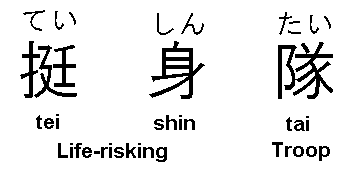
The traditional idea of division of labor by sex delayed its enforcement in the Imperial Japan. History records Tokyo first conceived the idea of Female Teishin-tai in September 1943. The Female Teishin-tai Order was promulgated in August 23, 1944. The order came into effect in Japan on the same day but never enforced in Korea.
Therefore, in the year 1941, when Kim Bok-dong left Korea, there should have been no idea or even the word of it in the Korean Peninsula. Furthermore, female teishin-tai were organized school-by-school for formation of troop-style chain-of-command. Thy came from wealthy upper-class families lived in large cities such as Pyongyang and Seoul. Teachers might have visited wealthy families but it should not happen that any civil servant visited the ordinary-class families in order to encourage the delivery of a girl for Teishin-tai. The author can say this because there are abundant records remain today relating to the Korean Peninsula Female Teishin-tai.
It is well known that Korean people intentionally confuse Teishin-tai with comfort women in order to create the impression that the mobilized workforce for Teishintai was equal to the mobilized workforce for comfort women. This strongly suggests that the Teishin-tai story was inserted in much later years in order to make anti-Japan civic groups happy.
In summation, the author believes that 1) Kim Bok-dong was fraudulently recruited by dishonest procurers, and 2) She is telling only a part of the whole picture. She should describe more about the real events that caused her leave from her home.


F. Moguro, Yokohama Japan |
Desparaging someone with conjured-up fake stories will make you ugly.
Oh-hohoho!
|



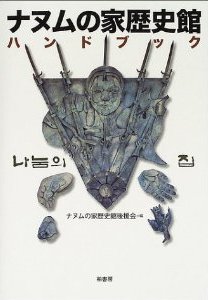

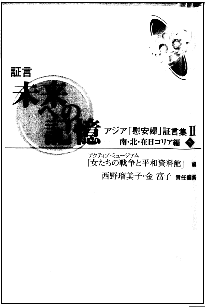









 To Top
To Top To Home
To Home